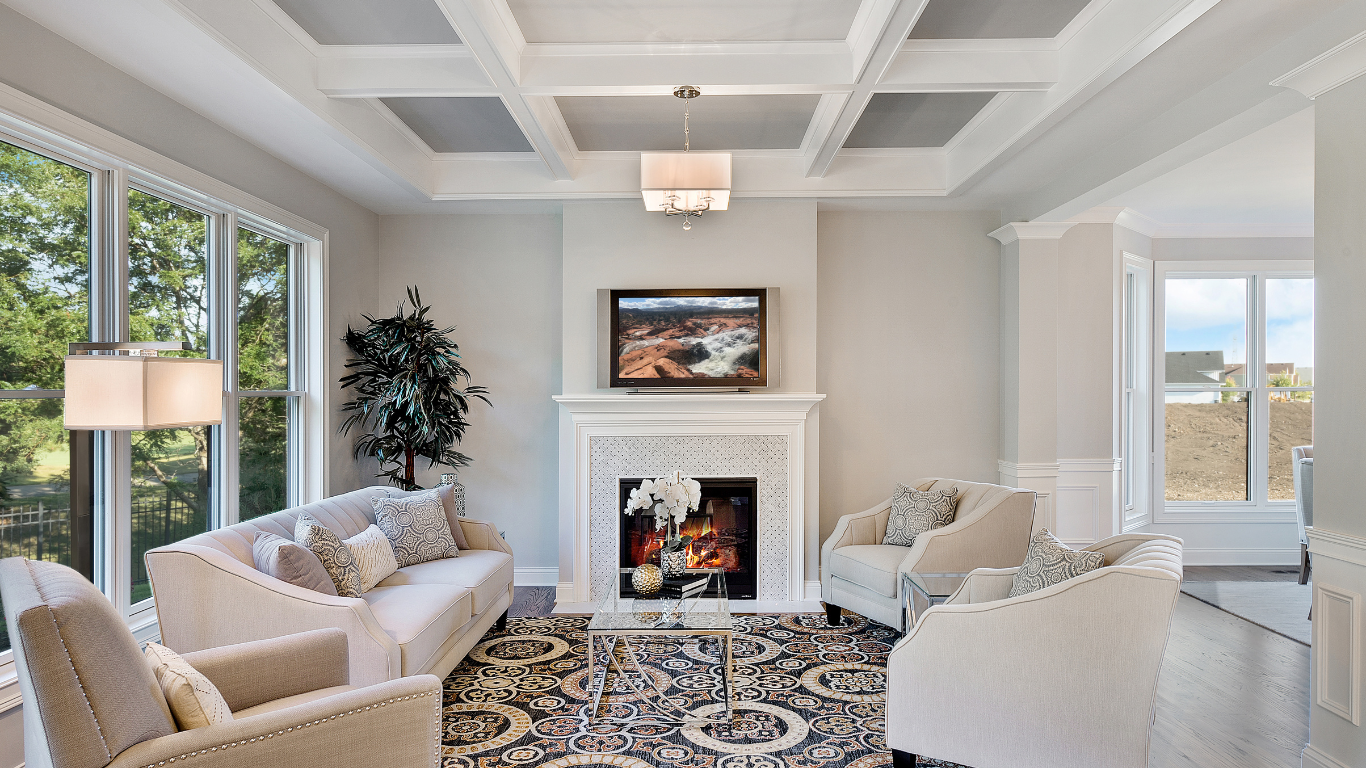Layered Lighting for Luxury: Staging Advice for Seniors Selling Their Home

When you’re ready to sell your home, any and every edge you can get can be the difference between a quick sell at top dollar or days (or weeks) on the market and taking less than asking. We cover some of the latest design trends which you can read here, but this will cover lighting tips for staging your home for selling.
Why Lighting Matters in Home Staging
Here are a few ways lighting can be used to impress buyers:
Set the mood: Whether you want to create a warm, cozy vibe in the living room or an invigorating, motivating atmosphere in the kitchen or home office, the right lighting can set the mood.
Emphasize: Use lighting to highlight valuable selling points in your home. Pendant lights can highlight a spacious kitchen island. A well-lit mirror can illuminate a dark bathroom. A large picture window can frame a picturesque view.
Evoke emotions: The right combination of bright, natural light and warm-toned lamps and light fixtures can make a house feel like a home by creating an inviting, welcoming environment.
The 3 Main Types of Lighting
While you may have thought of lighting as dim or bright before, when using light layering, there are three different types of lighting that can help you choose whether you want to set the mood, emphasize an area or evoke emotions in a particular part of your home.
Ambient lighting: This is the kind of lighting you need to move around a room without bumping into the furniture. It’s typically the light that comes on when you flip the main switch, but It doesn’t have to come from a single, central ceiling source. Recessed lights, wall-mounts, chandeliers and floor lamps can all contribute to the ambient light.
Accent lighting: Use this type of lighting to highlight different parts of your room or features like pictures, fireplaces and ornate pieces of furniture. It’s also known as ‘directional light’ and can be provided by wall sconces, chandeliers, lamps or small recessed lights. Accent lights should be three times stronger than ambient lights.
Task lighting: This is what you use when you’re performing a specific task and need to see what you’re doing. Think desk lamps that allow you to see your keyboard or pendant lights in the kitchen so you clearly see what you’re chopping or measuring. Light layering allows you to use task lights with ambient and accent light to create an overall effect.
What Are the Different Light Layering Techniques?
There are three main techniques that can help you think about light layering .
Vertical layering: This lighting technique helps create dimension by arranging light sources at varying heights around a room.
Horizontal layering: This is used for creating areas of interest and focal points and can be done by using track lighting to highlight picture frames or art. Another example is using under-cabinet and over-cabinet strip lights in your kitchen.
Depth layering: Use this technique to creating areas of interest between the background and foreground of a room so that the spatial depth is emphasized. There’s not a set formula for this type of layering, so try positioning different lighting fixtures carefully around the room and try out different fixture distances and heights to see which arrangement looks the best. To make sure dimension is clearly noticeable from every vantage point, be sure to look at your room from all angles.
Room by Room Lighting Tips for Staging Your Home
Living room: Don’t rely on a single overhead light. Use multiple light sources and try different settings. For example, put table lamps on either side of a fireplace and use a floor lap to create a reading nook. You can also highlight artworks or architectural features with accent wall lights.
Dining room: For this room, focus on the table rather than the room itself. A chandelier or low-hung pendant over a round table or a trio of small pendants over a long table are good places to start. Then add layers to the rest of the room with smaller wall lights or table lamps.
Kitchen: Instead of relying totally on recessed spotlights, use pendant lights, table lamps and wall lights to create ‘zones’ in the kitchen.
Bedroom: This is probably the one room you’ve used light layering – like pairing an overhead light with bedside lamps – and didn’t even know it. Just check to see if there are any tweaks to be made.
See Your Retirement in a More Flattering Light at Gleannloch Farms
Looking to sell your home for top dollar and move on to your next home in retirement? To check out the single-story homes and apartments at The Village at Gleannloch Farms, schedule a personal visit today by using our Community Assistant chat feature or contacting us here.




